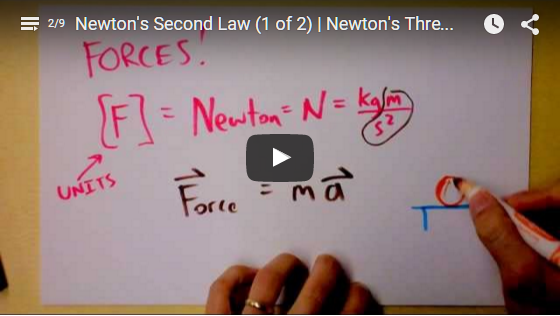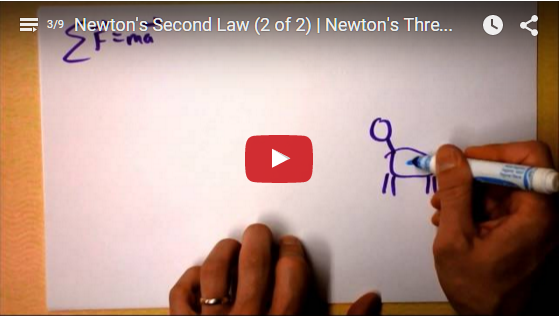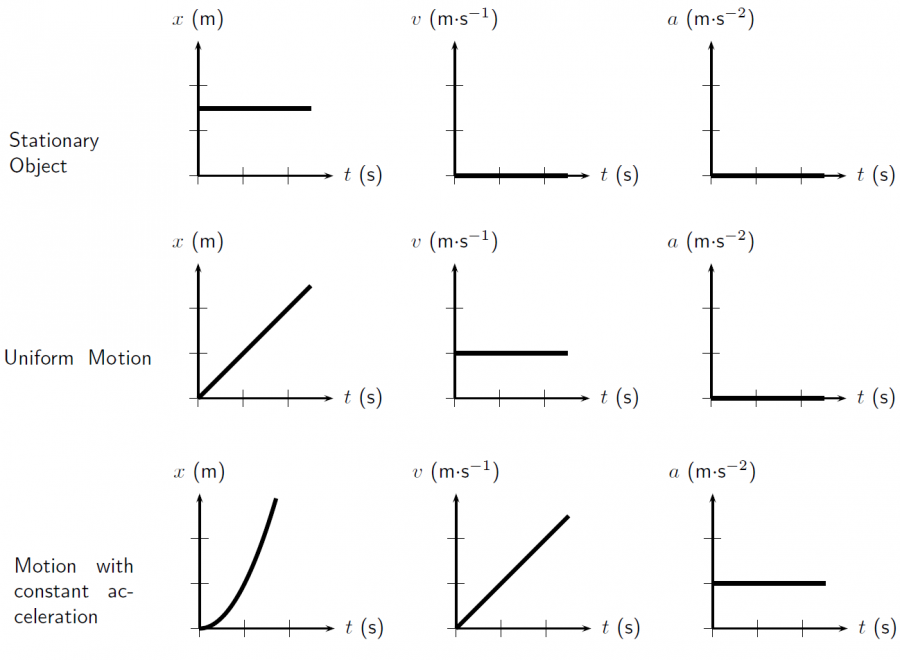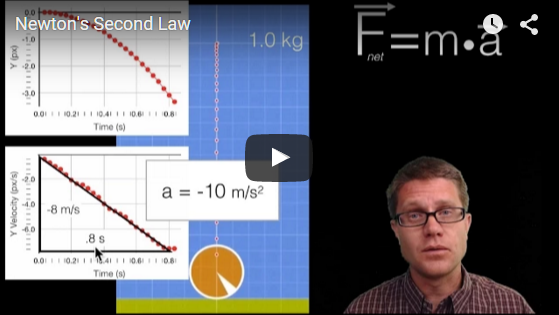| Multiple Representations is the idea that a physical phenomena can be explored in many different ways. For example, there is the physical representation which models the system with figures and diagrams, such as a free body diagram. There is also the mathematical representation which uses the equation(s) governing the physics of the system. All of the representations can be used together to help us understand and quantify the physical phenomena. |
Observe the different types of representations for this section below;

This website will introduce the math concepts used for Newton's second law. There are several examples to get you started;
Here is a two part video sequence that demonstrates how to use the math associated with Newton's Second Law by Doc Schuster.
Part 1;
Part 2;
The plots represent the position, velocity, and acceleration for a number of different cases. Newton's 2nd law tells us net force is equal to the mass times the acceleration. Assuming the mass is constant, the net force would then have a plot similar in shape to the acceleration.
A spaceship has two equal rockets firing, one that pushes it in the galactic northern direction and another in the western direction. The rockets provide the agents acting on the ship which the conseqences of these forces are the ship accelerating in the northwestern direction. The magnitude of the ship's acceleration decreases inversely to it's increase in mass.
This short video produced by the European Space Agency explains Newton's second law with mini demonstrations;
This Bozeman Science video is easy to understand and it shows several different applications of Newton's second law;




